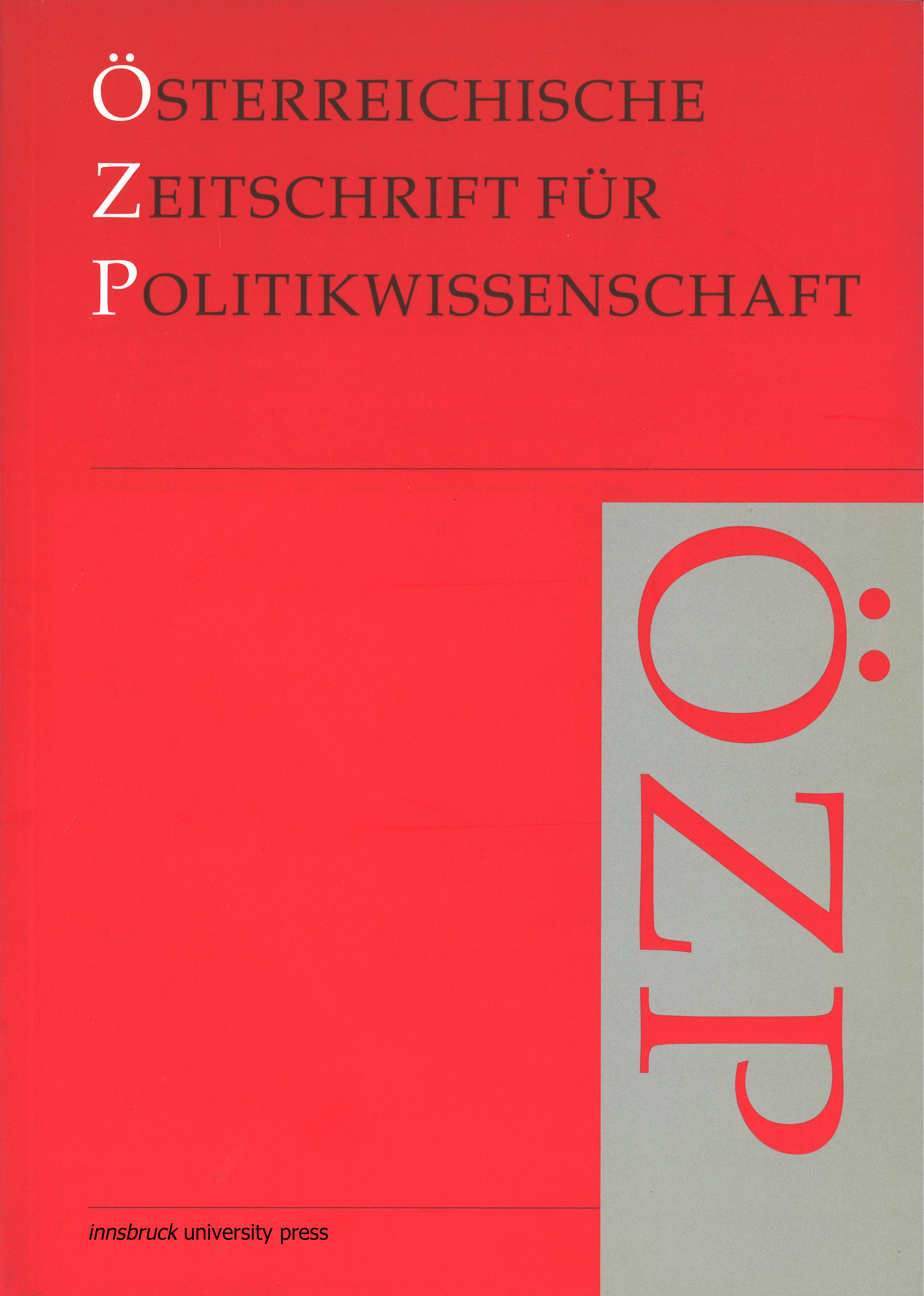Die staatliche Kontrolle territorialen Zugangs. Die Entwicklung der Visumpolitiken in den USA und Österreich
DOI:
https://doi.org/10.15203/ozp.561.vol40iss3Keywords:
USA, Österreich, EU, Visumpolitiken, OECD, KonvergenzAbstract
Während die Immigrationspolitiken von OECD-Staaten in der Forschung bisher viel Aufmerksamkeit fanden, fehlen bisher Analysen, die sich mit der Entwicklung von Visumpolitiken über die Zeit beschäftigen. Dieser Artikel trägt dazu bei, dieses Defizit zu beheben. Wir analysieren die Visumpolitiken der USA und Österreichs im Hinblick auf Kurzzeitreisen. Durch Österreichs EU-Beitritt im Jahre 1995 erfasst unsere Untersuchung nicht nur die österreichische Visumpolitik, sondern auch den Beginn und die Entwicklung der EU-Politik in diesem Feld. Mit dieser Fallauswahl konzentrieren wir uns nicht nur auf zwei beliebte touristische Reiseziele der Welt, sondern, wenn man die Harmonisierung der Visumpolitik in der EU mitbedenkt, auch ab 1995 auf die zwei wichtigsten ökonomischen Regionen innerhalb der OECD. Wir zeigen, dass Bürger aus wohlhabenden Demokratien eher in den Genuss von Visumerleichterungen kamen als solche aus anderen Ländern. Über die Zeit verstärkte sich dieser Zusammenhang und führte zu einer zunehmenden Selektivität bei der Auswahl von „erwünschten“ und „unerwünschten“ Reisenden. Zusätzlich wuchs die Übereinstimmung zwischen den Visumregimen der USA und Österreichs/der EU seit den 1990er- Jahren.Downloads
Issue
Section
License
The OZP is the authorized quarterly publication of the Österreichische Gesellschaft für Politikwissenschaft (ÖGPW, Austrian Political Science Association)
The author of an article (in case of multiple authors: the corresponding author, responsible for releasing this material on behalf of any and all co-authors) accepted to be published in the OZP hereby acknowledges the following Copyright Notice:
- The author retains the copyright to the article.
- It is the responsibility of the author, not of the OZP, to obtain permission to use any previously published and/or copyrighted material.
- Publication of a submitted text is dependent on positive results from the peer reviewing. In such a case, the OZP editors have the right to publish the text.
- In case of publication, the article will be assigned a DOI (digital object identifier) number.
- The author agrees to abide by an open access Creative Commons Attribution (CC BY nc) license. The license permits any user to download, print out, extract, reuse, archive, and distribute the article in any non-commercial way, so long as appropriate credit is given to the author and source of the work.
- The license ensures that the author’s article will be available as widely as possible and that the article can be included in any scientific archive. In order to facilitate distribution, the author agrees that the article, once published, will be submitted to various abstracting, indexing and archiving services as selected by the OZP.
- In addition, the author is encouraged to self-archive the article, once published, with reference to the place of the first publication.
- After the contribution appears in the OZP, it is still possible to publish it elsewhere with reference to the place of the first publication.
- The finished article, if published, will include a correspondence address (both postal and email) of the author.
- If written under the auspices of a grant from one or more funding agencies, such as FWF (Austrian Science Fund), ERC (European Research Council), and Horizon 2020 (EU Framework Programme), an article accepted for publication has to be deposited in an Open Access archive. The OZP’s archiving policy is compliant with these provisions. (In case the article derives on funding from a different source, the author is responsible to check compliance of provisions.)




